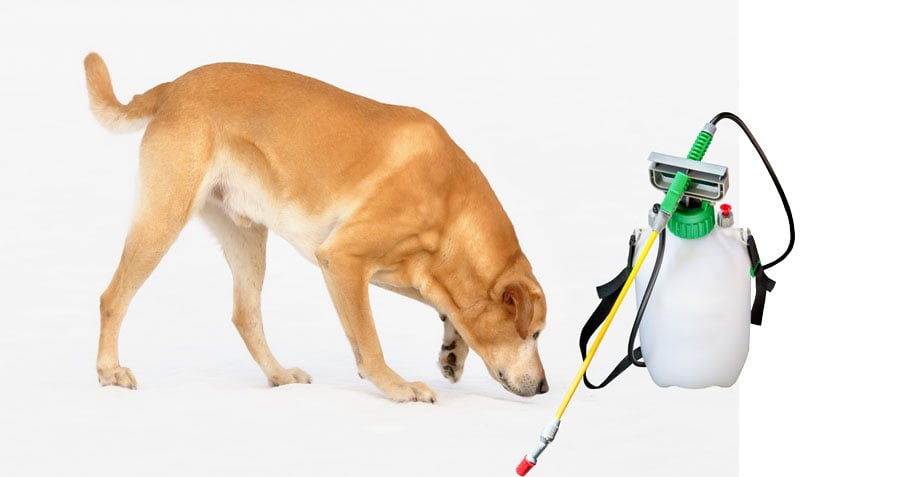It's that time of year again, and the bugs are starting to hatch and swarm around our heads. If your dog is like most, he or she probably loves to run around in the foothills or the parks, attracting all kinds of ticks, fleas, and other bugs. Keeping your dog safe from insects is an important part of being a pet owner, especially in the summer, and we've got all the information you need to use insecticides around your pup safely. The most important thing to remember: only use products that are designed to be safe for your dog, and use caution in your lawn care. Here's the inside scoop into controlling insects on your property and your pet.
Keeping Your Dog Flea and Tick Free the Safe Way: Safe Lawn Care
When it comes to protecting your dog from annoying fleas and disease-bearing ticks, it's important to stay informed and talk to your veterinarian. They can recommend the products you should use directly on your pet. But there's another front where you should be fighting insects: your yard.
Know the Signs of Insecticide Poisoning
Many dog owners begin their fight against ticks and fleas in their backyard, which is a smart choice. If your dog spends most of his outside time in your own yard, it makes perfect sense to begin your protective measures there. However, this is often where safety issues come into play. Walking into the nearest lawn and garden store and grabbing an insecticide off the shelf could be dangerous to your dog, especially if you end up with one of the more toxic types. Treating insecticide poisoning can cost anywhere between $300 and $3000, and it's a painful experience for your pet. Here's what to watch out for.
The most dangerous insecticides for dogs are:
- Carbamate insecticides
- d-Limonene
- Methoxychlor
- Pyrethrins or pyrethroids
These insecticides could cause poisoning in your dog if ingested, particularly carbamates.
Look out for these signs of insecticide poisoning in your dog:
- Drooling
- Gagging
- Nausea and vomiting
- Diarrhea
- Loss of appetite
- Paranoia or agitation
- Tremors and seizures
- Convulsions
- Breathing difficulty
- High heart rate
The acronym SLUD is a helpful one to remember: salivation, lacrimation, urination, and diarrhea: this often points to carbamate poisoning, and indicates that your dog needs immediate emergency attention from a veterinarian.
Dog-Smart Lawn Care
Now that we've covered what not to do let's dive into the best ways to keep your lawn free of fleas and ticks in a way that's safe for your pet. There are a few ways you can achieve this, and many helpful tips don't require insecticides or much extra work.
- Cut it close: Overgrown hedges, bushes, weeds, and grass are the perfect place for ticks and fleas to hide. Think of areas in your lawn that are shady and wet—these are likely to be the areas that insects will hide. Cut your bushes back and keep your grass cut low to reduce the areas where fleas and ticks can stay.
- Find fleas: If you think that your back yard is full of fleas, try this simple trick. Put on a long pair of white socks and walk around your yard. You'll see the fleas jumping contrasted against the white of your socks, and you'll know where to focus your efforts.
- Avoid sprays and chemicals: An effective way to handle fleas is to purchase nematodes—a small wormlike insect that likes to eat fleas. Pick them up are your local garden supply store and apply them according to the package directions.
- Check every product: There's information available from the Natural Resources Defense Council's GreenPaws Product Guide, giving you detailed instructions on which products to use and which to avoid.
For more information about keeping your lawn care safe for your pet this summer, contact us and check out our blog.

